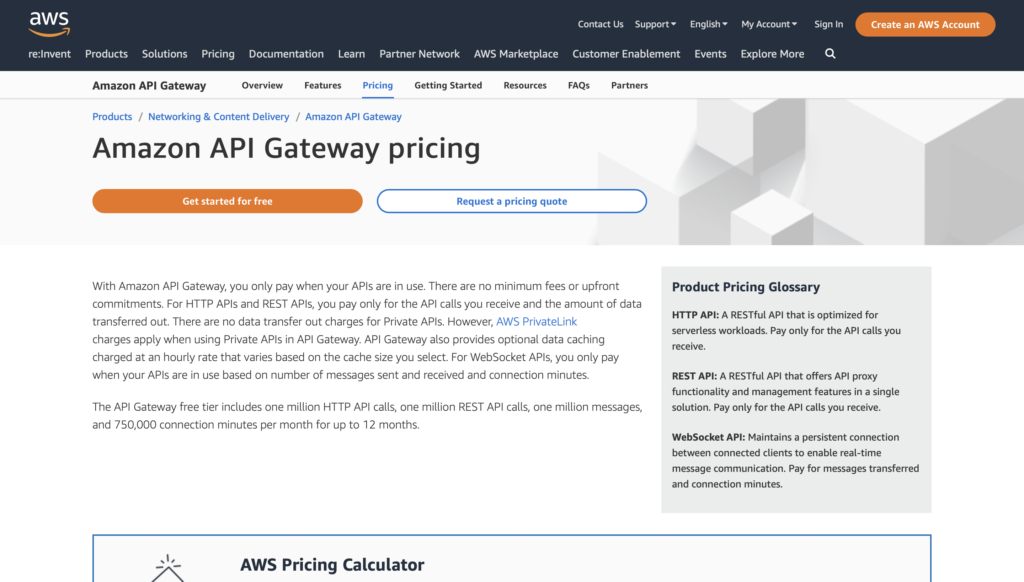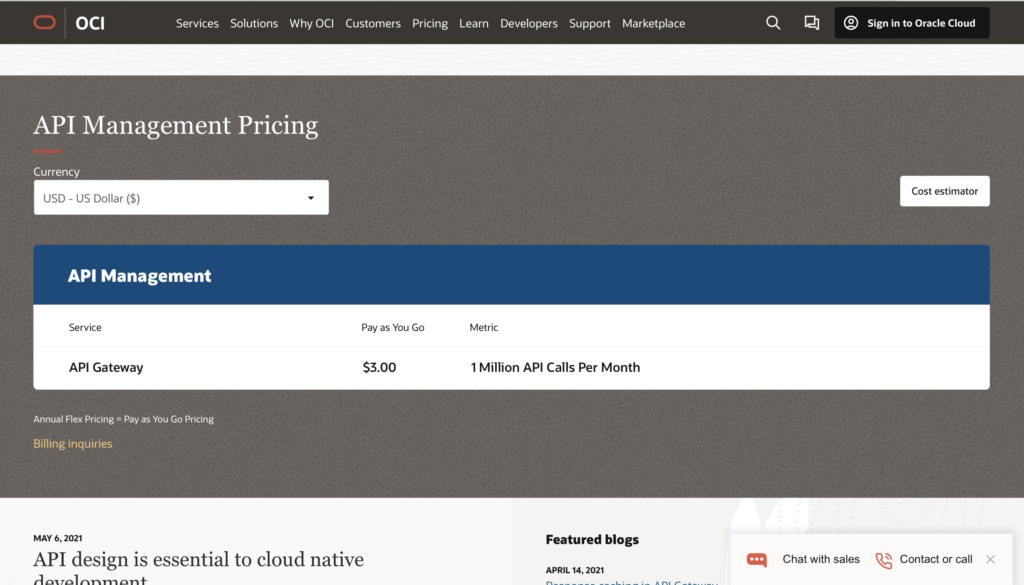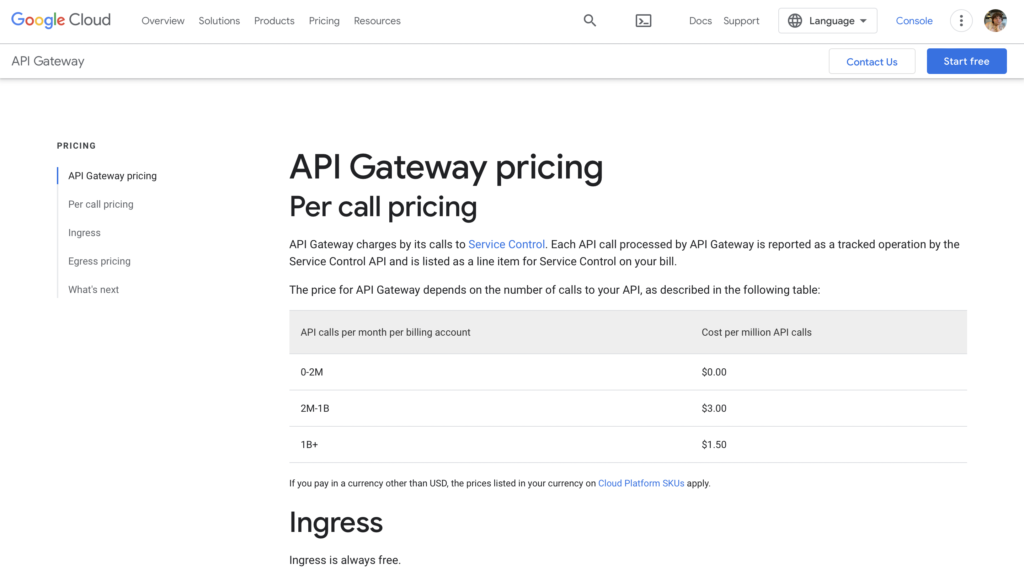
The need for API gateways is at an all-time high.
From SaaS to ecommerce to drop services, more and more tech companies use microservices to power their business. API gateways help these services interact, but they come at a cost.
How much can you expect to pay for an API gateway? Here’s our breakdown of API gateway pricing for AWS, Google Cloud, and more.
What is an API gateway?

Image Credit: MART PRODUCTION from Pexels
Let’s say you have a drop servicing business. You may have a microservice set up for chatting with clients, and a different one set up for user profiles. Your whole site is built around these microservices, and each of them has its own API (application programming interface) that connects them to the site.
You could build your site so that it accesses all of these microservices, but what if you want to change it? If you wanted to switch out a service for one with a different communication protocol, or split one microservice into several, you’d need to redo your whole interface.
An API gateway is a middle layer between the user and the backend API. Rather than having the user interact with each API, creating the potential for slow speeds and security risks, they interact with a single gateway that goes through each microservice to give them what they need. This allows you to tweak things under the hood without impacting the user experience.
[in_content_ads gallery=”logos” logo=”on” title=”Need graphic design help?” subtitle=”Try Penji’s Unlimited Graphic Design and get all your branding, digital, print, and UXUI designs done in one place.” btntext=”Learn More” btnlink=”https://penji.co”]
Build or buy?

Image Credit: Tima Miroshnichenko from Pexels
Now that you know about API gateways, you’re faced with another question. Do you build your own API gateway, implement an existing open-source gateway, or buy into one from a provider?
On the surface, paying for an API gateway may seem unnecessary. There are many great resources for building your own gateway and some impressive free options, including Netflix’s Zuul gateway. Still, many recommend looking to providers rather than relying on your own server.
You may have a cloud-based platform built on IaaS, or be a startup without much server space. If so, an API gateway will be an additional load on your server. It’s also an extra step to reach your service, which can result in slower speeds for users.
The advantage of paying market API gateway pricing, in addition to integration with your IaaS of choice, is the added tools. Major cloud providers include API management tools in their gateways, such as security and scaling. Cloud-based options give you the freedom to focus on growth while gateway upkeep is handled offsite.
API gateway pricing
If you do decide to turn to a provider for your API gateway needs, you have many options to choose from. This breakdown of API gateway pricing includes several prominent API gateway offerings, as well as what elements factor into their pricing.
1) AWS API Gateway

Amazon’s API Gateway acts as both a gateway and a PaaS for creating and deploying your own APIs. Using API Gateway requires the API developer to have an AWS account, but the app developer doesn’t have to. Its features include integration with other Amazon services and security tools that allow for control and ease of mind.
Price: Amazon’s API Gateway pricing is a per-usage model. It begins with a year-long free tier/trial period. For these 12 months, you can receive up to 1 million calls to each different type of API (REST, HTTP, WebSocket) for free. After that, the price is broken down like so:
- <1 million calls/mo for 12 months: free
- HTTP APIs (price per million): $1 (<300m calls), $0.90 (>300m)
- REST APIs: $3.50 (<333m calls), $2.80 (between 333m and 667m), $2.95 (next 19b), $1.87 (>20b)
- WebSocket APIs: $1 (<1b), $0.80 (>1b) + $0.25 per million connection minutes
The above reflects prices for the US East region.
2) Kong Gateway
Kong advertises itself as “the world’s most popular API gateway.” Their single-platform Konnect gateway and development tool includes features like a service hub, a dev portal, analytics, access control, and support and training services.
Price: If you don’t need all the bells and whistles, you can download Kong’s open-source API Gateway for free. Konnect has three subscription tiers:
- Free tier: Up to 3 managed services. 2m requests per month. 24hr data retention, basic authentication, rate limiting, and serverless integration. Up to 3 APIs in dev portal, role-based access control, and cloud deployment.
- Plus tier: $250/service per month. Pay as you go for managed services and dev portal. 10m requests per month + $2.50 per additional 1m. 6 months of data retention, heightened security, tech support and product training.
- Enterprise tier: Contact sales for pricing information. Managed services, requests per month, and APIs in dev portal all based on custom plan. Self-managed, advanced security, 1 year of data retention. Available worldwide.
3) Oracle API Gateway

Like Amazon, Oracle offers a whole host of IaaS and PaaS tools for cloud computing. Their paid API gateway is most useful for people employing Oracle’s other services. They offer cloud infrastructure, BI, integration, data management, security, machine learning, and a whole host of other products. If you’re interested, you may consider including their API gateway in your package.
Price: Oracle’s API gateway comes at a single, pay-as-you-go cost: $3 per million calls per month.
4) Microsoft Azure API Management
Microsoft Azure includes gateways as part of its extensive API management package. Unlike some other cloud providers, Azure’s suite of services is available for APIs hosted on any cloud, not just their own. In addition to gateways, they offer admin and security tools, analytics, caching, a dev portal, and virtual network support.
Price: Azure has a larger scale of five per-use tiers for their API tools, with increased features at higher tiers.
- Consumption tier: <1m calls per subscription included, then 3.5¢ per 10k calls. Usage limits apply.
- Developer tier: $48.04/unit per month. 10MB internal cache, 1 scale-out unit, private server. ~500 requests/second maximum.
- Basic tier: $147.17/unit per month. 50MB internal cache, 2 scale-out units, dev portal. ~1,000 requests/second.
- Standard tier: $686.72/unit per month. 1GB internal cache, 4 scale-out units, dev portal with Azure Active Directory. ~2,500 requests/second.
- Premium tier: $2,795.17/unit per month. 5GB internal cache, 12 scale-out units per region, self-hosted gateway abilities. ~4,000 requests/second.
- Self-hosted gateway: Free at the developer tier, $1,000.10/month per gateway deployment at the premium tier.
All prices listed are for the US East region.
5) Google Cloud API Gateway

Another cloud service provider with their own API gateway tool! Google Cloud’s fully-managed gateway is available for programs hosted through Google’s other cloud services, such as Cloud Run and App Engine. Made for REST APIs, their gateway also offers deployment and control tools with Google’s elegant trademark design.
Pricing: Google’s API gateway pricing is billed per-call, with additional pricing depending on the source and destination of traffic.
- Per-call pricing: Free (0-2m calls per month), $3/million calls (2m-1b calls per month), $1.50/million calls (1b+ calls per month).
- Egress pricing (per GB per month): Starting at $0.105 for domestic traffic in North America and Europe. $0.120 for other continents and intercontinental (except Oceania and China). $0.190 for intercontinental to/from Oceania and any traffic to China.
6) Free and open-source options
Like Kong, many other notable API gateways are free and/or open-source. These programs may lack the advanced features of API management tools, but they’re trusted by many in the tech industry. Notable open-source API gateways include KrakenD, Netflix’s Zuul, Apache APISIX, and Ocelot.
Are there other options?
Aren’t there always? Let’s say you want the added features of a big cloud company’s API gateway, but without the… big cloud company. There are a ton of great API management platforms out there, and many of them include gateways. Some examples include Akana, Tyk, Gloo Edge, and Postman.
There are also some strong alternatives to the API gateway model, such as the service mesh. If your software was built on a PaaS platform, you probably already have API gateways included in your architecture.
Streamlining the API experience is a key part of managing tech in 2022. Luckily, there are great options out there to help you get it done no matter your budget or skill set.
Streamline Your Graphic Design Process
See how Penji can help your business scale with unlimited graphic design.











